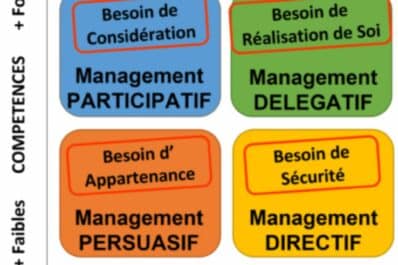Reactive Executive can provide you with an interim manager in less than 48 hours.
Find your manager
Vertical mobility: How can transition management be the key?
In the modern business world, vertical mobility has emerged as an essential lever for companies seeking success. It is a path to professional advancement that allows you to reach new heights in your career.
Today, businesses face unprecedented challenges, including accelerating technological innovations, global economic instability and rapidly changing consumer expectations. To meet these changing demands, businesses must embrace vertical mobility as a way to boost their agility and adaptability. This is where transition management comes into play . But how can it stimulate vertical mobility?
Explore the different types of professional mobility

Professional mobility is characterized, in the broad sense, by the change of situation in the context of work . The employee can change position, function or even sector of activity during his career. Professional mobility offers the opportunity to explore new opportunities, develop new skills and progress in professional life.
There are 3 main types of professional mobility : internal mobility, external mobility and geographic mobility.
- Internal mobility : the employee moves from one position to another within the same company. This may include a department transfer, job rotation or change of responsibility,
- External mobility : the employee leaves their current company to join another, often to take on new challenges, obtain better remuneration or pursue new professional aspirations,
- Geographic mobility : the employee moves to a new city or country, but always within the same company, for professional reasons. This may include reassignment, taking on international projects, or seeking opportunities in growing markets.
What is horizontal mobility?

Horizontal mobility is a form of internal mobility . It involves a change of position within the same company, without necessarily implying hierarchical progression. The employee moves to a position similar or different from their own to acquire new skills or diversify their experience.
Horizontal mobility offers employees flexibility and openness to continuous learning, while allowing companies to leverage the potential of their employees and foster a culture of evolution and adaptability.
What is vertical mobility?
Vertical mobility is internal mobility which is defined by the change in hierarchical position of an employee , within the same company. This form of mobility generally involves an increase in social status, increased responsibilities and salary progression.
Vertical mobility offers several advantages, both to employees and to companies:
- For employees, it provides access to better professional development opportunities and broadens their professional network,
- For employees, it promotes talent retention by offering development prospects to ambitious and high-performing employees. This also ensures solid internal succession.
Often perceived as upward mobility, vertical mobility can also be downward, in the case where the employee moves to a lower level.
What is the difference between vertical mobility and horizontal mobility?
Vertical mobility and horizontal mobility are two forms of internal professional mobility. However, they are very distinct. Unlike vertical mobility, which focuses on progression in terms of responsibilities and hierarchical level, horizontal mobility only involves a transition to another position within the organization, whether similar or not.
What are the reasons for professional mobility?
Exploring new opportunities and broadening one’s professional horizons are common motivations for resorting to professional mobility . Other motivations such as skills development, new challenges, new professional aspirations or attractive remuneration can also play a determining role.
Whether internal, external or geographical, professional mobility offers several possibilities to employees:
- Acquire new skills and knowledge,
- Explore different areas of expertise,
- Develop a more global vision of the company,
- Strengthen their professional network,
- Position yourself for future opportunities.
On the organizational side, professional mobility contributes to better talent retention, increased productivity and better employee management. These benefits help create a culture of learning, growth and development within the company, which can result in better performance and greater competitiveness in the market.
Transition management: a catalyst for vertical mobility
Vertical mobility can create challenges for both companies and employees. However, the use of transition management with a Firm specializing in transition management offers a solution to overcome these challenges. But how does this approach address it?
What are the issues related to vertical mobility?
Vertical mobility is essential for any employee and any company : it is what allows professional development and better competitiveness on the market. However, many companies face various issues related to vertical mobility:
- Lack of skills and experience needed to hold senior positions,
- Lack of internal availability to fill management positions when they become vacant,
- Resistance to change: employees may fear the unknown or be reluctant to abandon their comfort zone for new challenges,
- Poor talent management and succession planning,
- Long and costly recruitment procedures.
The effect of interim management on vertical mobility
Interim management is an ideal solution for companies facing major restructuring. This strategic approach brings temporary external expertise within a company to solve specific problems, drive major changes or fill skills gaps. Thanks to his expertise, the Transition Manager provides missing skills, facilitates change, identifies and prepares future leaders.
How to implement transition management to stimulate vertical mobility?
Today’s companies increasingly recognize the importance of interim management as a powerful lever for stimulating vertical mobility . This innovative approach helps fill skills gaps, manage career transitions and stimulate professional growth, over a defined period of time. But how can we effectively implement transition management to maximize its impact on vertical mobility?
4 key steps to implementing transition management
- Define the company’s objectives and needs: which position(s) require external expertise?
- Determine the specific skills required for these roles,
- Establish transparent communication with the employees concerned on the reasons for using interim management,
- Implementation of transition management.
The key tools and techniques of transition management
Transition management is armed with various tools and techniques that promote the success of this approach:
- The detailed transition plan : this plan summarizes the responsibilities of the Transition Manager, the objectives and the implementation of performance indicators. This plan helps ensure a smooth transition and maximizes the impact on vertical mobility.
- Individual coaching : this personalized support for employees aims to develop their skills, strengthen their self-confidence and prepare them for longer-term leadership roles. Thanks to this individual support, employees are able to fully seize the vertical mobility opportunities offered by interim management.
The future of vertical mobility and transition management
The future of vertical mobility and transition management holds promising potential. Current trends and future perspectives continue to shape these areas, which are positioning themselves as real drivers for businesses.
Current trends in vertical mobility and transition management
Today, we are witnessing several key trends that are significantly influencing vertical mobility and transition management:
- Increasing demand for vertical mobility : Today’s professionals aspire to dynamic career paths, focused on progression and the acquisition of new skills. This growing demand for vertical mobility highlights the importance of interim management, which facilitates career transitions by providing the expertise and skills needed to make these changes successful.
- The emergence of a more flexible and agile labor market : Companies are increasingly adopting agile organizational structures, enabling rapid reallocation of resources based on changing needs. In this context, interim management plays an essential role by offering a flexible solution to meet these temporary vertical mobility needs. Companies can call on Interim Managers for specific projects, transition periods or to fill vacant positions on a transitional basis.
What predictions for the future of vertical mobility and transition management?
For years to come, we can expect an increase in the use of interim management as a proactive rather than reactive strategy . Companies are increasingly recognizing the benefits of this approach and can begin to integrate transition management into their talent development and succession management plans. By taking this preventative approach, organizations can prepare their employees for vertical mobility, by identifying and developing the necessary skills in advance.
In summary, vertical mobility is establishing itself as an essential solution in the business world, promoting agility and professional growth. In this context, transition management emerges as an essential catalyst for stimulating this mobility and overcoming the challenges linked to career transitions. Reactive Executive provides you with Transition Managers to fill key positions, manage transition periods or manage strategic projects. Our experienced team and proactive approach will help you meet the challenges of vertical mobility and fully exploit its potential for your business.



































